
It all depends on your point of view. Is this 1948 Triumph 2000 Roadster on Craigslist in Peru, New York, needing the works, worth a heady $8,000? These were classy cars in their day, but the styling was already seriously outdated by 1948—the 2000 even had a rumble seat. Triumph was to blow away memories of the 2000 when it debuted the TR2 in 1953. But one of these old-timers in good shape would be fun for Sunday drives. The challenge is that this one hasn’t run in decades, needs a total restoration, and could end up costing the new owner far more than the vehicle’s value on the open market.
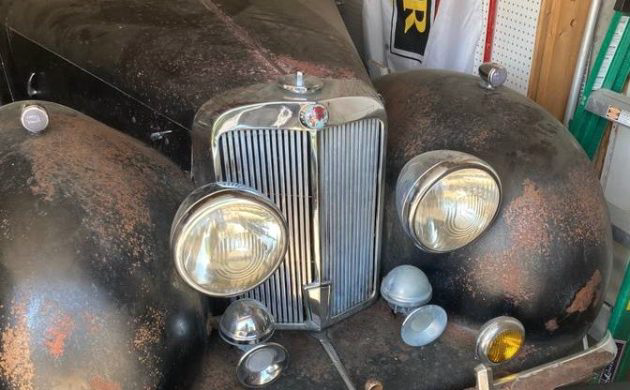
The owner notes hopefully that the Triumph “would make an awesome hot rod.” It’s hard to picture that exactly. Anyone who’d appreciate these old cruisers would prefer to keep them stock. The bodies of the Triumph 2000 (except for the front fenders) were fashioned from aluminum, and probably hand-beaten, meaning a fender from one wouldn’t fit on another. That’s the way the English did it back then. But while the body is rust-free the chassis underneath may not be, and there’s also the condition of the body’s ash framing to consider. The interior is in total tatters, the paint is nearly gone, but it does look complete. Still, not a cheap restoration. The Classic.com price average for a restored car, $25,780, shows these cars are hardly in huge demand.
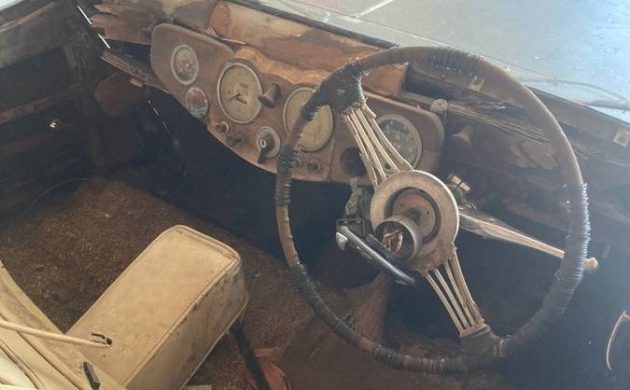
The Roadster was produced by the Standard Motor Company from 1946 to 1949, so what we have here is a late-production example. The early ones were 1.8 liters, and this was slightly enlarged for the 2000, built in just 1948 and ’49. Performance was not lively, with the 1800 taking 34 seconds to 60. The 1800 featured Solex carburetion and a column-shifted four-speed manual with synchromesh on the top three gears. The chassis was cut down from the 1800 sedan, and featured independent suspension in front and a live axle in the rear. Hydraulic brakes! Passengers sat on an unusually wide bench seat that could accommodate three.
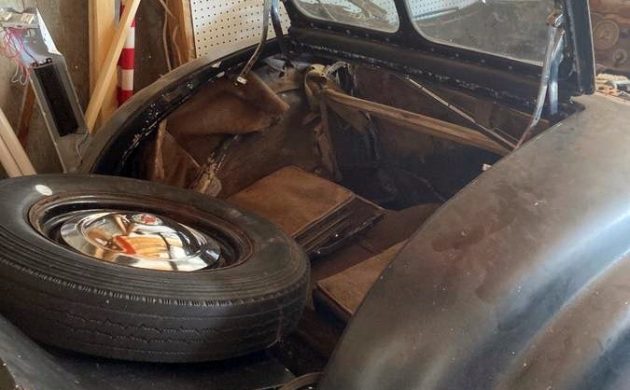
The 2000 got the two-liter Vanguard engine, transmission and rear axle. The all-synchromesh transmission was now a three speed. And it could reach 60 in 27.9 seconds.
These cars were never thick on the ground, and just trickled out of the factory (when the workers were not on strike). Just 2,000 of the 2000s were built, and the game was over by October of 1949. So rarity is in the car’s corner, but as a practical prospect for a spare-no-expenses restoration, well, it’s a stretch.




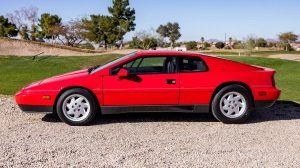
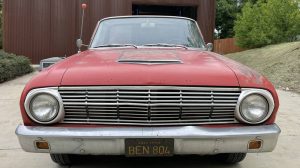
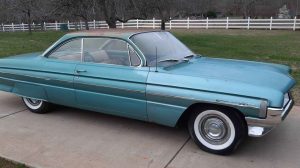
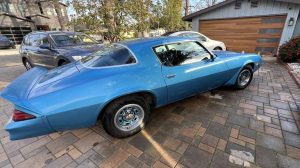


At first glance it seems fairly straightforward- the interior is going to swallow a few grand for sure, but even if the engine is completely shot it’s still the same wet sleeve 4 banger that went into the TR 2,3,4 isn’t it? So 100 hp and dead reliable power to shove this old girl down the lane is pretty attainable, right?
Would it have Whitworth fasteners?
The shortage of steel was so acute in post-war Britain that aluminum was heavily used in car bodies. Even the early Jaguar XL-120’s had aluminum body stampings.
It would be a shame to do anything else with this Triumph, other than restore it to its former glory.
I think one has to assume so. My 79 Midget did.
Yes, mostly BSF (British Standard Fine), a few BSW (British Standard Whitworth). British cars and motorcycles switched to US threads in the early 70ies
Of course.
Employing two Whitworth fasteners, offer up the moldex fitting to the grunnion banjo and secure with shellac.
I have sent a couple of emails asking for the Commission Number (VIN) for the Roadster Club Records, but no response
The shortage of steel was so acute in post-war Britain that aluminum was heavily used in car bodies. Even the early Jaguar XL-120’s had aluminum body stampings.
It would be a shame to do anything else with this Triumph, other than restore it to its former glory.
The fact that it still exists is something. It is a very good looking British automobile and has some promise (to me). $8K is quite steep for this condition as a start (unless you desperately want this at all costs). I am not sure there is a big enough buyers market for a full restoration (professional?) with those labor costs. If I acquired this reasonably, I would do a period restoration (myself) and get it back to nice driving condition and put it on the road to enjoy along with others to enjoy it. It may not be full original with the materials used to put it back together but it would be period. Purists have every right to put a car back together as the see fit and I respect that. I am not a purist, however I would like to see the car back on the road to enjoy and for others to enjoy. 99% of people would not know the difference of what was original manufacture and what was not. I would do this just for the enjoyment and not the investment. PS. ( My peanut gallery comments)
Your “peanut” comments are well received Joe. I am a purist and would love to see this Triumph retored to it’s former glory, however, as other commenters have said, it will cost a fortune to get it into Concours condition, so a restoration using whatever is available to make it a useable, roadworthy, roadster is o.k. As somebody said earlier, nobody you are likely to meet will know if it’s original or not as they won’t have seen another one, most likely ever, and won’t see one ever again. I once had an Aston Martin DB 6 fitted with a Jaguar XJ 6 engine. The previous owner had the Jaguar name removed from the valve covers, had them polished to perfection, and nobody other than the local Aston Martin owners knew that it wasn’t an original AM engine.
The seller should be contacting the various Triumph Clubs . . .
The next owner hopefully can do the body prep and painting themselves, and do the mechanical wrenching also.
Otherwise, its next storage will be well under water.
Somewhat biased (own a TR4a) but I know I guy who owned one and it is a great car for cruising. Almost got killed in it but that’s another story.
My Dad bought one in FL that had been hit by lightning and was gutted by a fire while I was in high school. He was an excellent woodworked and rebuilt all the body framing and dash. I did a lot of mechanical stuff on it. Quite leisurely for performance during the couple of short drives I took it on. He sold it while I was off to college. No idea where that one ended up.
This is a car I have always hated ( like the Triumph Stag 20 years later!) but they do have a following. Hopeless dynamically, but get attention at car shows.
And I have seen a hot rod version….which failed to convince but then I am not a customer for Triumph Roadster.
Probably the last UK car to fit a rumble seat, they are solidly built ( maybe the body frame would need close inspection) and parts/support are available from UK. Price must be negotiable but there’s plenty here to attract an enthusiast for the marque.